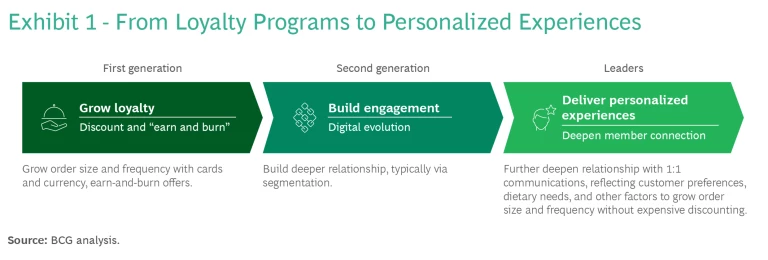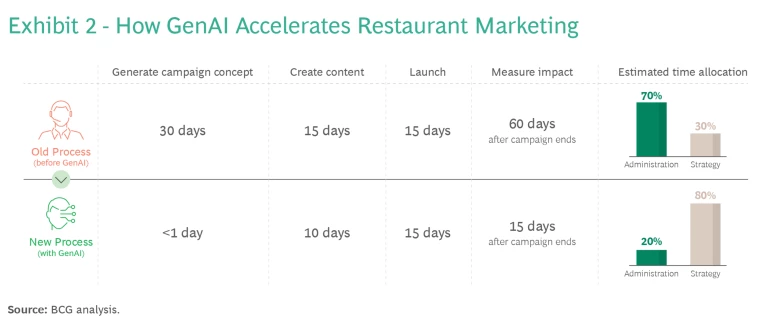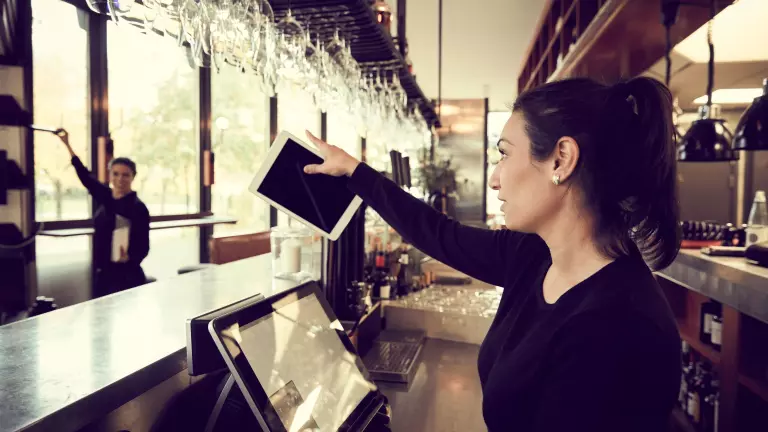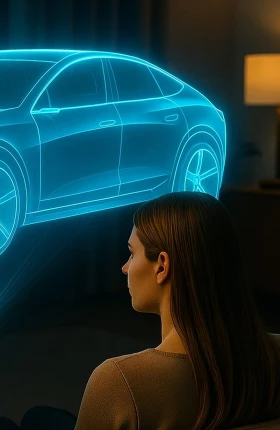AI is revolutionizing how leading restaurants communicate with their customers, eliminating bottlenecks to create personalized recommendations, offers, and other communications that drive repeat visits and revenue.
The So What
In our experience, personalized communication through owned channels yields three times as much digital engagement and a 6% to 10% revenue lift.
To unlock the opportunity of GenAI for personalization, restaurants need to radically rewire some existing workflows.
Many restaurants today say they are addressing personalization, but the reality is different. One common problem is that they have large, transaction-based segments (for example, customers who have not visited in 90 days) and treat everyone inside each segment—as many as tens of thousands of individuals—the same.
The combination traditional AI and generative AI can allow restaurants to create communications that reflect each customer’s dining preferences, dietary requirements, and other factors that make communications more relevant in their moment of choice. (See Exhibit 1.)

Personalization can also reduce the threat of disintermediation by online delivery platforms. It brings the interaction into a restaurant’s digital channels, allowing it to own the customer experience. The brand also collects the data, allowing it to deliver additional personalization in a virtuous flywheel.
Dive Deeper
By acting as a copilot in marketing, GenAI can help restaurants:
Move faster. With GenAI, the marketing team can rapidly iterate through ideas for unique campaigns, customer experiences, and offers. They can test creative material for effectiveness through virtual focus groups created with a combination of brand-owned data and publicly available data. Processes that used to take weeks can now be done in a day.
Unblock bottlenecks. GenAI can automate the creation of unique subject lines, calls to action, and even images. All this can be done with tools that understand the customer. A brand’s library of marketing materials can grow exponentially in a fraction of the time that would be taken by traditional processes.
Be more strategic. With many time-consuming, tactical processes accelerated by GenAI assistance, marketers can spend more time creating new campaign ideas and unique customer/dining experiences. They also have the time to work on the kind of strategic initiatives that many restaurants have long wanted to deliver but have been constrained by resource issues, such as gamification and subscription programs.
We are already seeing that generative AI can reduce time to market on a new campaign from 60 days to 15 days. (See Exhibit 2.) This helps brands capture quick opportunities such as those presented by changes to the weather or sports results.

What Else
A restaurant’s GenAI push will only work with a strong foundation: rich, accurate customer data. To compete in the arena of customer preferences, restaurants need a loyalty program that captures customer data from everywhere—including in-store point of sale, online orders, third-party data from aggregators, and even unstructured data such as reviews or social media posts—to create a customer DNA that ties all touchpoints together in one “golden record.” Only then can the AI-driven personalization engine infer preferences that generate personalized customer experiences.
Now What
The 10/20/70 rule is the key to unlocking the full potential of AI in any business. For restaurants, it implies spending:
- 10% of the effort on the algorithms and underlying foundation models. Restaurants need to ensure that the new technologies are appropriate for the brand, target clients, and workflow.
- 20% on data and technical enablement. Restaurants should invest in data readiness and build a future-ready marketing tech stack. Restaurants need a loyalty program that captures customer data from everywhere—including in-store point of sale, online orders, third-party data, and even unstructured data such as reviews or social media posts—to create a customer DNA that ties all touchpoints together in one “golden record.” Once this is in place, they must look at other essential tech building blocks, such as their email service provider, offer management system, and content management.
- 70% rethinking marketing execution, both the organization and operating model. What role do agency partners play when a brand’s in-house team takes a more strategic role? What extra skills does that in-house team need to drive interaction via owned channels and generate maximum value from AI? Restaurants may need to adjust their operating model to this new era of mass personalization, such as rethinking email approval processes.
But restaurants must act swiftly: the gap between digital winners and losers was widening before; the new possibilities of GenAI mean that it will widen even faster.
The authors thank Bensey Davidson, Laura Huddleston, and Ahad Khan for their input.






